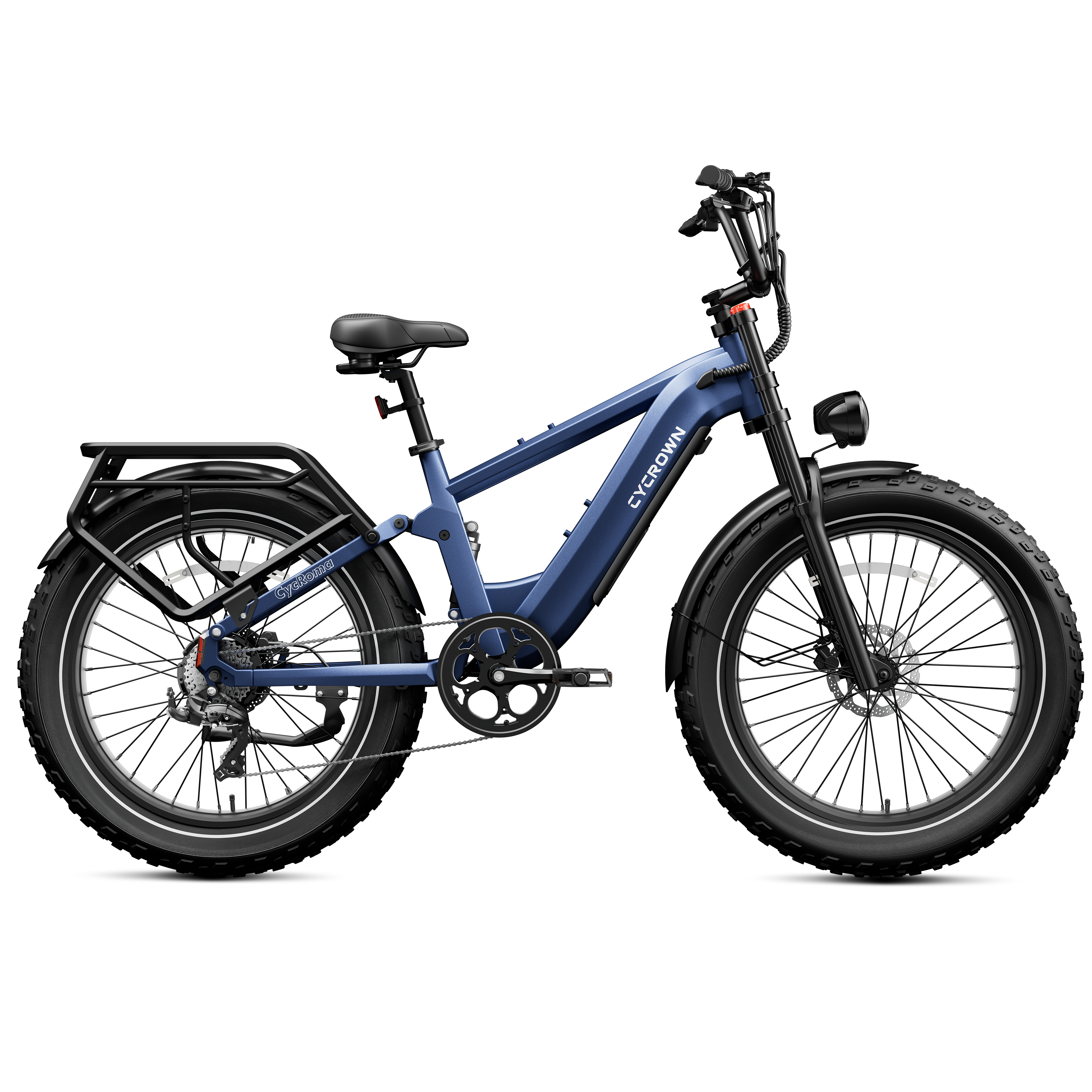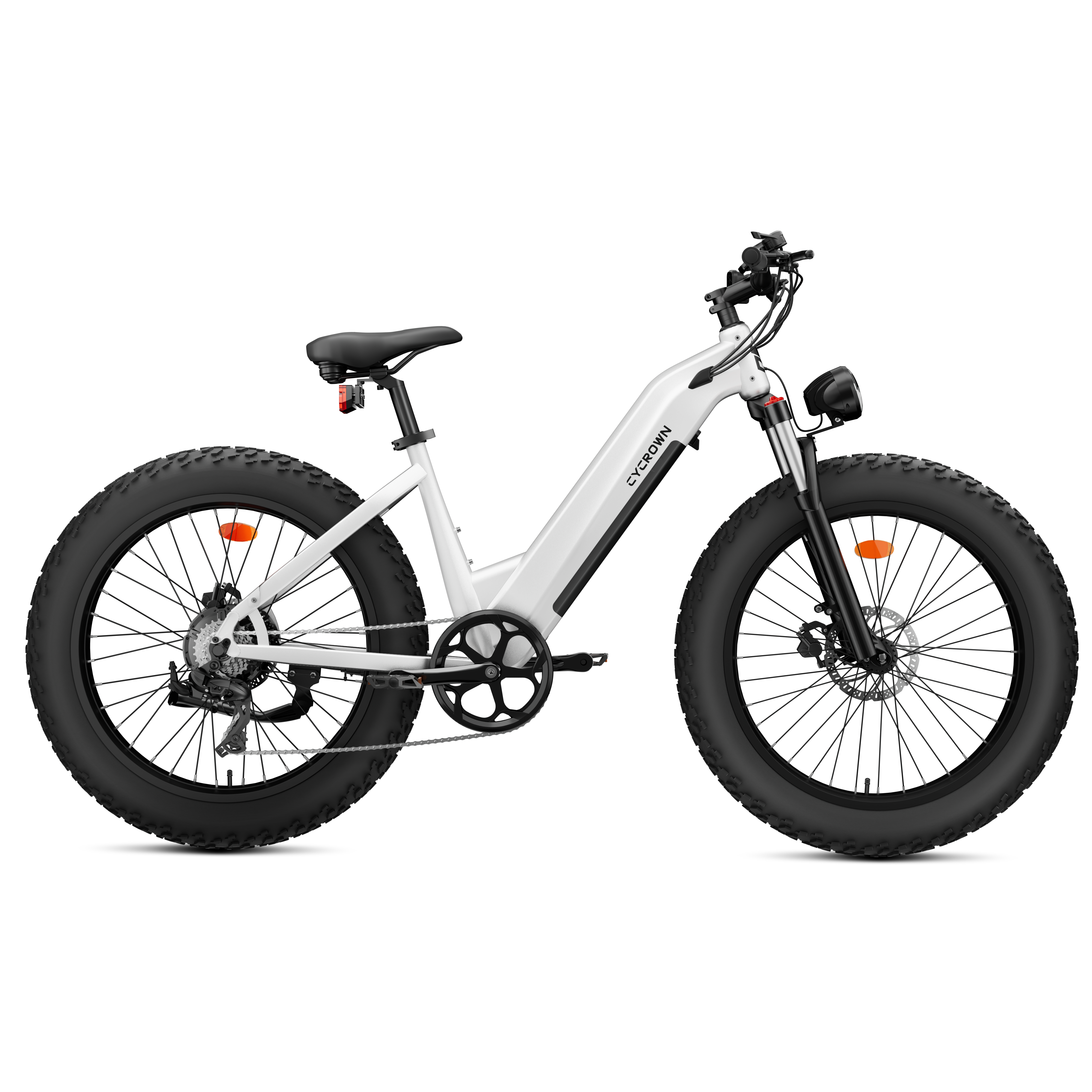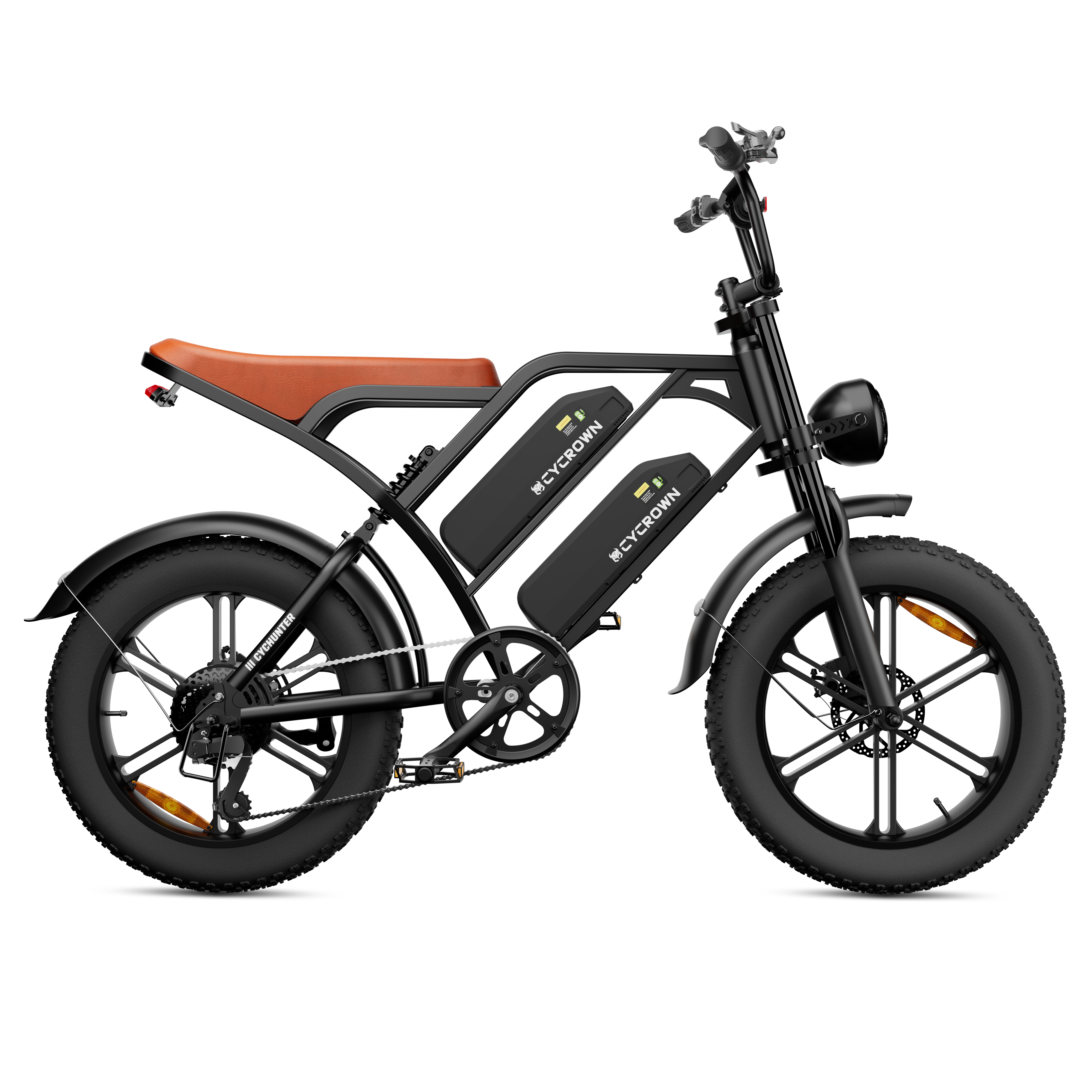Electric bike safety is paramount as e-bikes become increasingly popular for sustainable transportation. This guide offers vital tips to keep you safe on the road. With a 67% jump in e-bike trips from 2017 to 2018 in the U.S., understanding safety is essential. The added speed and power of electric bikes can pose additional risks to riders, making it essential to prioritize safety measures.
Learn everything from helmet use to road rules in this guide. E-bikes can reach speeds of 28 mph, so embracing safety measures is crucial for all riders, whether you're a seasoned cyclist or new to e-bikes.
Understanding Electric Bikes

Electric bikes, also known as e-bikes, are bicycles equipped with an electric motor and batteries. They are designed to assist riders when pedaling, making it easier to ride uphill or against strong winds. E-bikes are becoming increasingly popular due to their convenience, efficiency, and eco-friendliness.
Electric Bike Components and Functionality
E-bikes have several components that work together to provide electric assistance to the rider. These components include:
- Motor: The motor is the main component of an e-bike. It provides electric power to assist the rider when pedaling. The power output of the motor can vary depending on the type of e-bike.
- Battery: The battery is what powers the motor. It is usually located on the frame of the bike and can be removable or integrated.
- Controller: The controller regulates the power output of the motor and manages the communication between the motor and the battery.
- Pedal Sensor: The pedal sensor detects the movement of the pedals and sends a signal to the controller to activate the motor.
Types of Electric Bikes
There are several types of e-bikes, each with its own specific safety considerations. Some of the most common types of e-bikes include:
- Pedelec: A pedelec is an e-bike that only provides assistance when the rider is pedaling. The motor stops when the rider stops pedaling. Pedelecs are the most common type of e-bike and are generally considered safe.
- Throttle: A throttle e-bike provides electric assistance when the rider twists a throttle, similar to a motorcycle. Throttle e-bikes can be more dangerous than pedelecs because the rider can easily lose control of the bike if they are not paying attention.
- Speed Pedelec: A speed pedelec is an e-bike that can reach speeds of up to 28 mph. Speed pedelecs are subject to different regulations than other e-bikes and require a special license and insurance in some countries.
- Cargo: A cargo e-bike is designed to carry heavy loads. Cargo e-bikes can be more difficult to handle than other e-bikes due to their weight and size.
When riding an e-bike, it is important to follow the same safety rules as you would when riding a regular bike. Wear a helmet, use lights and reflectors, and obey traffic laws. Additionally, be aware of the specific safety considerations of your e-bike type.
Electric Bike Safety Gears and Equipments

When it comes to electric bike safety, having the right gear and equipment is crucial. This section will discuss the importance of helmets, visibility aids, and proper attire.
1. Helmets for an Ebike
Wearing a helmet is one of the most important things you can do to protect yourself while riding an electric bike. Look for helmets that meet safety standards such as CPSC, ASTM, or Snell. These standards ensure that the helmet has passed rigorous safety tests and will provide adequate protection in the event of a crash.
Lights and Reflectors
Visibility aids such as lights and reflective stickers are also essential for electric bike safety. Make sure your bike has a front light, rear light, and reflectors on the pedals, wheels, and frame. These will make you more visible to other road users, especially in low-light conditions.
Proper Attire
In addition to helmets and visibility aids, it's important to wear proper attire while riding an electric bike. This includes gloves, durable clothing, and other protective gear. Gloves will protect your hands in the event of a fall, while durable clothing will provide some protection against road rash.
Electric Bike Pre-Ride Safety Checks

Before you take your electric bike out for a ride, it's important to perform a few pre-ride safety checks to ensure that it is in good working order. Here are some key areas to focus on:
1. Battery and Electrical Systems
Check the battery charge level before you start your ride. Most electric bikes have a display that shows the battery level, so make sure that it is fully charged or has enough charge for your ride. If you plan to use pedal assist, make sure that the battery is installed and connected properly.
2. Brakes and Tires
Check the brakes on your electric bike to make sure that they are functioning properly. Squeeze the brake levers and make sure that the brakes engage smoothly and quickly. If the brakes feel spongy or don't engage properly, you may need to have them adjusted or repaired.
Check the tire pressure on your electric bike before you ride. Proper tire pressure is important for safety and performance. Use a tire pressure gauge to check the pressure and adjust it if necessary. Be sure to check both tires and make sure that they are properly inflated.
3. Frame and Suspension
Inspect the frame and suspension of your electric bike before you ride. Look for any cracks, dents, or other damage to the frame or suspension components. If you notice any damage, do not ride your electric bike until it has been repaired.
Riding Skills and Techniques
When it comes to riding an electric bike, honing your riding skills and techniques is crucial to staying safe on the road. Here are some key areas to focus on:
1. Handling and Maneuvering
Electric bikes can be heavier than regular bikes, so it's important to practice handling and maneuvering your bike before hitting the road. Start by practicing in a safe, open area where you can get used to the weight and handling of your bike. Make sure you know how to properly shift your weight and use your brakes to control your bike.
2. Speed Control
Electric bikes can reach higher top speeds than regular bikes, so it's important to know how to control your speed. Use your bike's pedal assist and throttle features to control your speed, and be sure to slow down before approaching corners or obstacles. Always keep a safe distance from other riders and pedestrians.
3. Riding in Traffic
When riding in traffic, it's important to follow all the rules of the road and be aware of your surroundings. Stay in designated bike lanes or on the right-hand side of the road, and use hand signals to indicate your turns. Always wear a helmet and reflective clothing to make yourself visible to other drivers.
Safe Electric Bike Riding Practices

Electric bikes are an efficient and eco-friendly mode of transportation that can be used for commuting, leisure, or exercise. However, just like traditional bicycles, electric bikes can be dangerous if not ridden safely. Here are some safe electric bike riding practices to keep in mind:
1. Traffic Laws for Electric Bikes
As an electric bike rider, you are subject to the same traffic laws and regulations as traditional bicycle riders. This means you must follow all traffic signals, stop signs, and other traffic laws. Additionally, you should always ride in the same direction as traffic and use hand signals to indicate turns or lane changes.
3. Handling and Speed Management
Electric bikes can reach high speeds, so it's important to know how to handle the bike in various traffic conditions. Always ride defensively and be aware of your surroundings. Practice emergency braking and brake before you reach a corner, not when you're already in the corner. When riding in traffic, try to maintain a consistent speed and avoid sudden movements.
4. Weather Considerations
When riding an electric bike, you should also consider the weather conditions. Rain, wind, and other weather conditions can make riding more difficult and dangerous. If you must ride in wet conditions, be sure to slow down and avoid sudden movements. Wear appropriate clothing and gear to stay dry and visible.
Advanced Safety Technologies
When it comes to electric bike safety, technology has come a long way in recent years. Advances in e-bike technology have made riding safer and more enjoyable than ever before. Here are some of the advanced safety technologies that you should know about:
1. Anti-lock Braking System (ABS)
An Anti-lock Braking System (ABS) is a safety feature that prevents the wheels from locking up during hard braking. This technology has been around for decades in cars and motorcycles, but it's now making its way into e-bikes. ABS can help prevent accidents by allowing you to stop quickly and safely, even on wet or slippery surfaces.
2. GPS Tracking
GPS tracking is a technology that allows you to track the location of your e-bike in real-time. This feature is particularly useful if your e-bike is stolen, as it can help you locate it quickly. Some e-bikes come with GPS tracking built-in, while others require you to purchase a separate GPS tracker.
3. Automatic Lights
Automatic lights are a safety feature that turns on your e-bike's lights automatically when it gets dark. This technology is particularly useful if you forget to turn on your lights or if you're riding in an area with poor lighting. Automatic lights can help you see and be seen by other motorists, reducing the risk of accidents.
4. Advanced Safety Technologies
Other advanced safety technologies that are available on some e-bikes include:
- Collision avoidance systems
- Lane departure warning systems
- Blind spot detection systems
- Rearview cameras
- Adaptive cruise control
Maintenance Tips for Electric Bikes
Regular maintenance is crucial to ensure the safety and longevity of your electric bike. By keeping your bike in good condition, you can prevent accidents and avoid costly repairs in the long run.
Here are some common maintenance tasks that you should perform regularly:
-
Keep your bike clean and dry. This will help prevent rust and corrosion, which can damage your bike's components over time. Use a soft cloth and mild soap to clean your bike, and avoid using high-pressure water or harsh chemicals.
-
Check your tires regularly. Make sure they are properly inflated and have enough tread. Underinflated tires can affect your bike's handling and cause accidents, while worn-out tires can be a safety hazard.
-
Inspect your brakes. Check your brake pads and make sure they are not worn out. If they are, replace them immediately. Also, check your brake cables and make sure they are not frayed or damaged.
-
Check your chain and gears. Make sure your chain is properly lubricated and not too loose or too tight. Check your gears for wear and tear, and make sure they are shifting smoothly.
-
Keep your battery charged. Make sure your battery is fully charged before each ride, and top it off whenever you have the chance. Also, make sure you know how far your battery can take you and plan your rides accordingly.
Perform these tasks regularly to ensure the safety and reliability of your electric bike. You should also refer to your bike's user manual for specific maintenance instructions and schedules.
What To Do in Case of an Accident when Riding Ebikes
Electric bikes are a convenient and eco-friendly mode of transportation, but accidents can happen. If you find yourself in an e-bike accident, it is important to take the necessary steps to ensure your safety and protect your legal rights.
Steps to take immediately following an accident
-
Check for injuries: The first step after an accident is to assess yourself and others for any injuries. If anyone is hurt, call 911 immediately.
-
Move to safety: If you are able to move, try to move yourself and your e-bike to a safe location that is away from traffic.
-
Exchange information: Exchange contact and insurance information with any other parties involved in the accident. Get the names, phone numbers, and addresses of any witnesses.
-
Document the accident: Take photos of the scene, including any damage to your e-bike and any other vehicles involved. Write down the time, date, location, and any other relevant details.
-
Contact your insurance company: Notify your insurance company of the accident as soon as possible. They can provide guidance on next steps and help you file a claim.
Information on insurance and legal considerations for e-bike riders
It is important to understand your insurance coverage and legal rights as an e-bike rider.
Here are some key considerations:
-
Insurance: Check with your insurance company to see if your e-bike is covered under your existing policy. Some policies may require additional coverage for e-bikes.
-
Legal requirements: E-bikes are subject to different laws and regulations than traditional bicycles. Make sure you are familiar with local laws and regulations regarding e-bike use.
- Liability: If you are involved in an accident, you may be held liable for any damages or injuries caused. It is important to have adequate insurance coverage and seek legal advice if necessary.
Conclusion on Electric Bike Safety
In conclusion, electric bikes offer a convenient and eco-friendly mode of transportation, but it is crucial to prioritize safety while riding. By following the tips outlined in this article, you can significantly reduce the risk of accidents and injuries. Remember to always wear proper safety gear, maintain high visibility, and obey traffic laws.
It is also important to continually hone your riding skills and stay updated on the latest safety practices. Consider taking a safety course or joining a local biking community to learn from experienced riders.
Explore CYCROWN electric bike selection and consider their Electric Biking Safety Kits to guarantee your bike is outfitted with essential safety components.
Electric Bike Safety Tips:
- Wear proper safety gear and maintain high visibility
- Obey traffic laws and ride predictably
- Continually hone your riding skills and stay updated on safety practices
We encourage you to adopt safe riding practices and engage in continual learning to ensure your riding experience is both safe and enjoyable.
Frequently Asked Questions
How safe is an electric bike?
Electric bikes are generally safe to ride as long as you follow the rules and take the necessary precautions. They are equipped with safety features such as brakes, lights, and reflectors, just like traditional bicycles.
However, it's important to wear protective gear such as a helmet and reflective clothing to increase your visibility and reduce the risk of injury. Make sure to also follow traffic laws and be aware of your surroundings.
Can electric bikes go in the rain?
Yes, you can ride Cycrown electric bikes in the rain. They are built to withstand wet conditions, but it's important to take extra precautions to ensure your safety. Wet roads can be slippery, so make sure to ride at a slower speed, brake earlier, and avoid sudden movements. You should also wear rain gear to stay dry and avoid getting sick.
Do electric bikes use a lot of electricity?
Electric bikes use very little electricity compared to other modes of transportation. They typically have a battery capacity of 500-800 watt-hours, which can provide a range of 20-50 miles per charge depending on the model and conditions. The battery can be recharged using a standard household outlet, and it usually takes 4-6 hours to fully charge.
How do I keep my electric bike safe?
To keep your electric bike safe, you should always lock it up when you're not using it. Use a high-quality lock and secure it to a fixed object such as a bike rack or pole.
You should also keep your bike in a secure location such as a garage or storage shed when not in use. Consider getting insurance to protect your investment in case of theft or damage.
Which is safer electric bike or scooter?
Both electric bikes and scooters can be safe to ride if you follow the rules and take the necessary precautions. However, electric bikes are generally safer than scooters because they are designed to be more stable and have a lower center of gravity.
They also have larger wheels and better brakes, which can help you stop quickly in case of an emergency.
How to make e-bikes safer?
To make e-bikes safer, they should have proper lights and reflectors for visibility, as well as reliable brakes that are regularly checked and maintained. Adding mirrors can help riders see traffic, while safety features like anti-lock brakes can prevent accidents.
It's also important for e-bikes to be built sturdily and for riders to be educated about safely operating them. Finally, wearing helmets and protective gear is crucial for rider safety.
Recommended Articles To Read
- What is a Class 1 Electric Bike? A Complete Guide
- How Far Can an Electric Bike Go on One Charge? A Guide
- E-Bike Battery Care: Maintenance & Performance Tips










